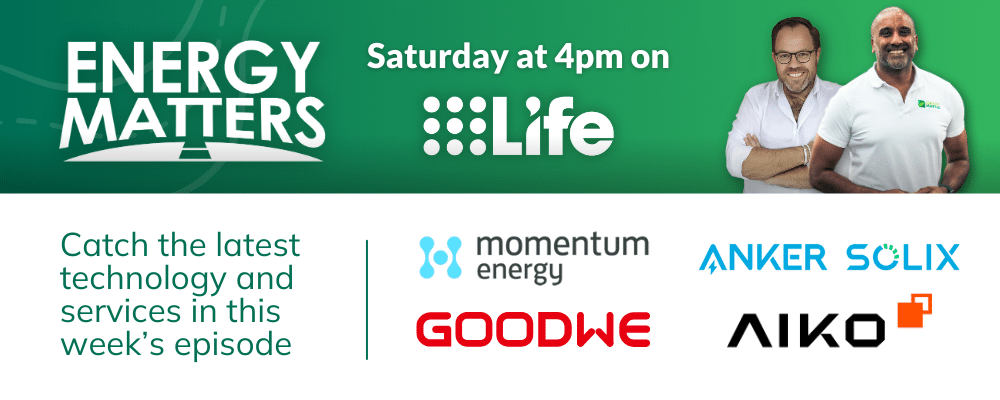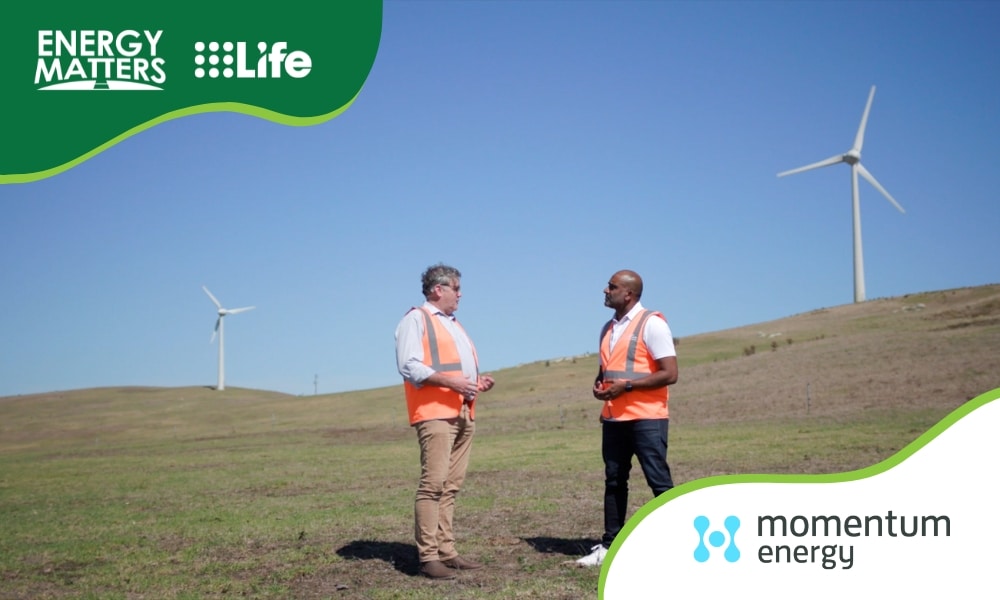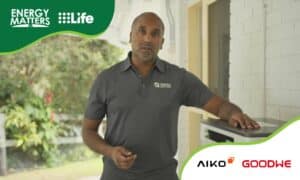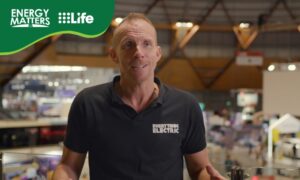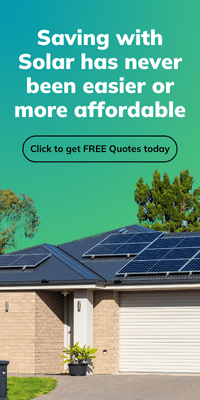Flinders Island set the scene for our look at the Hydro Tasmania Hybrid Energy Hub in Episode 8 of Energy Matters. Roshan ventured to Tasmania’s north-east island to catch up with Simon van der Aa, Specialist Engineer for Hydro Tasmania. Roshan and Simon toured the Hub to give us an insight into how the 950 locals rely on a mix of wind, solar, and battery storage to power their homes and businesses.
The Flinders Island Hybrid Energy Hub
Flinders Island is home to a close-knit community that services the Island’s farming, fishing, and tourism industry. A centralised diesel power station powered the Island’s homes and businesses from 1984. The Whitemark Power Station, followed by the Flinders Island Power Station, was commissioned by Hydro Tasmania and provided consistent power to a previously decentralised island.
After community input and support from the Australian Renewable Energy Agency (ARENA), the Hybrid Energy Hub was developed and commissioned in 2016. The Hub combines the following technologies to provide uninterrupted power to the Flinders Island population:
- Solar panels
- Two wind turbines
- Battery storage
- Flywheel technology
- Smart controls
- Diesel turbines
Hydro Tasmania tapped into the expertise of Entura, their highly-experienced specialist power and water consultancy business and an international leader in developing hybrid energy innovations. These solutions help remote communities in Australia and overseas make the switch to reliable, clean energy systems.
Powering an island
Flinders Island’s 950 locals now rely on a clever combo of solar, wind, battery storage and diesel backup to keep the lights on. The Hybrid Energy Hub replaced the old diesel-reliant model with a smarter, cleaner system. The island’s solar panels and two wind turbines feed into a local microgrid, while excess energy is stored in batteries, and a high-speed flywheel stabilises the system. Diesel generators now sit quietly in the wings, only kicking in when needed. The Hub consistently delivers around 60% renewable energy, with the potential to hit 100% when conditions line up.
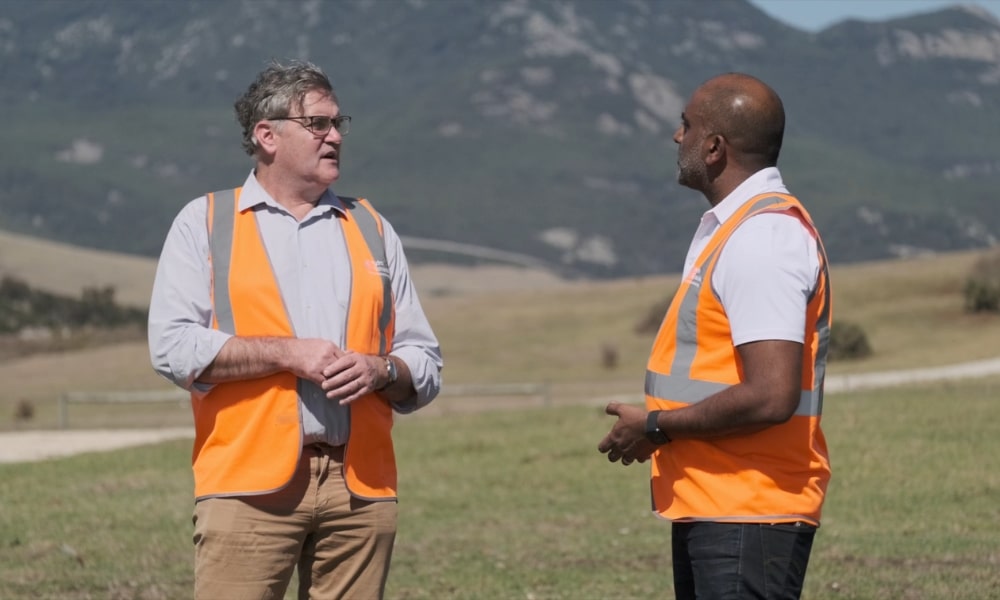
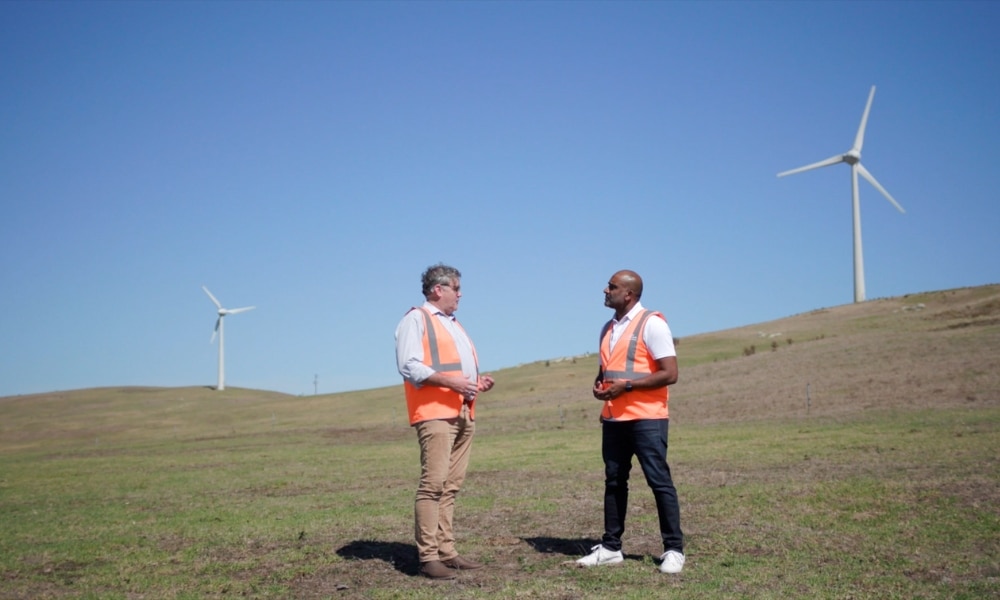
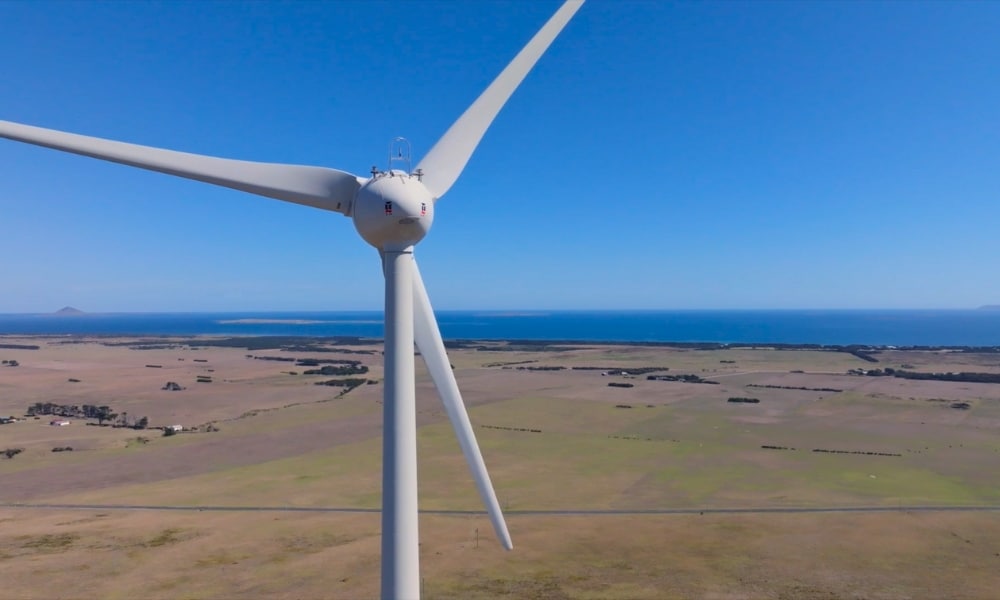
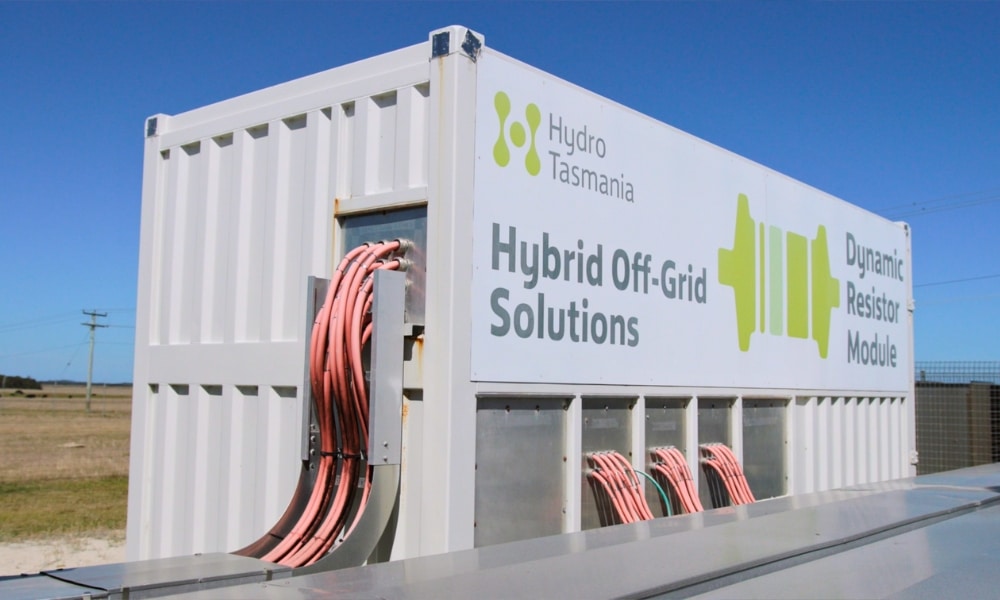
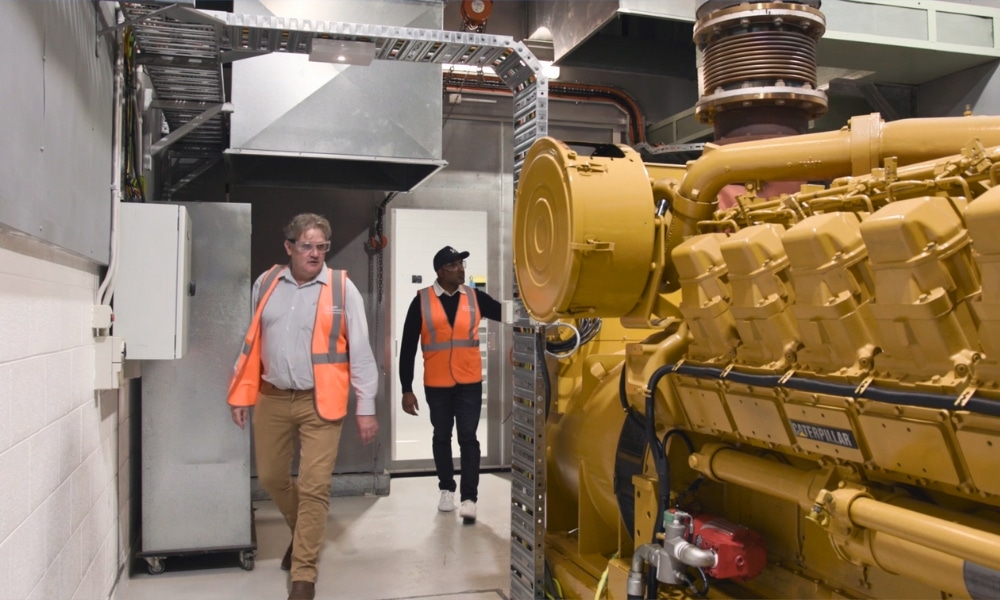
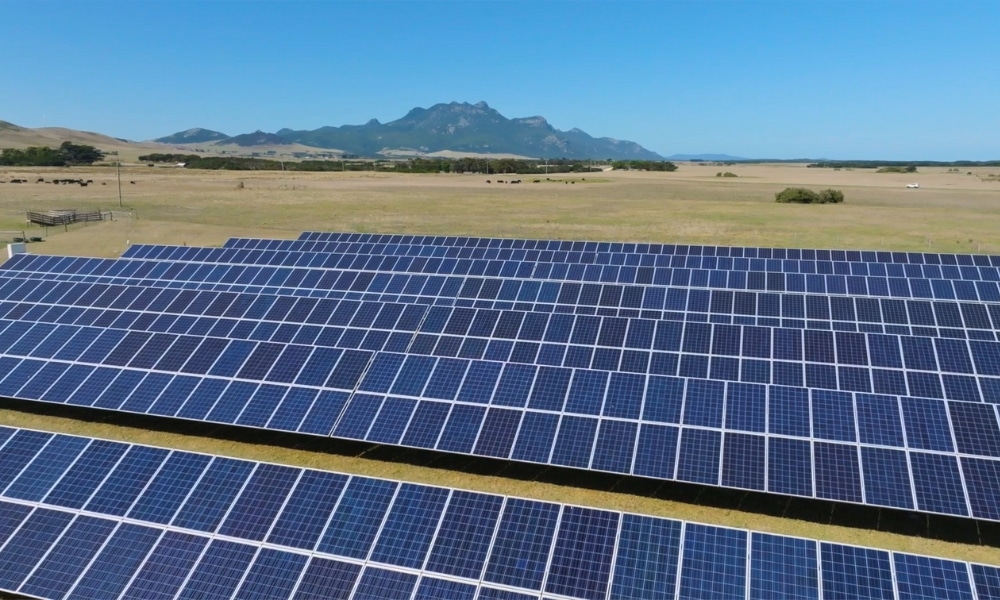
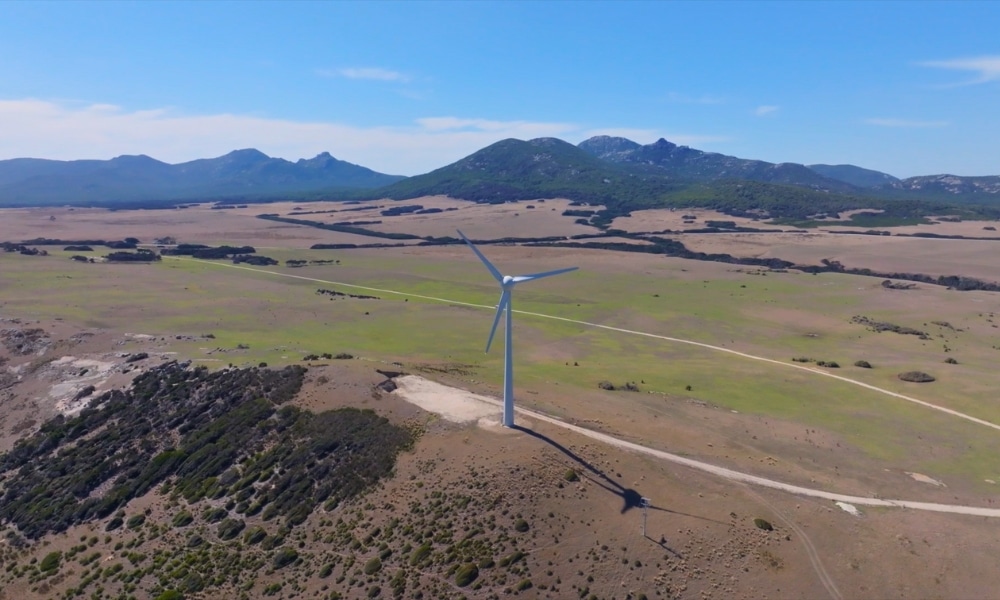
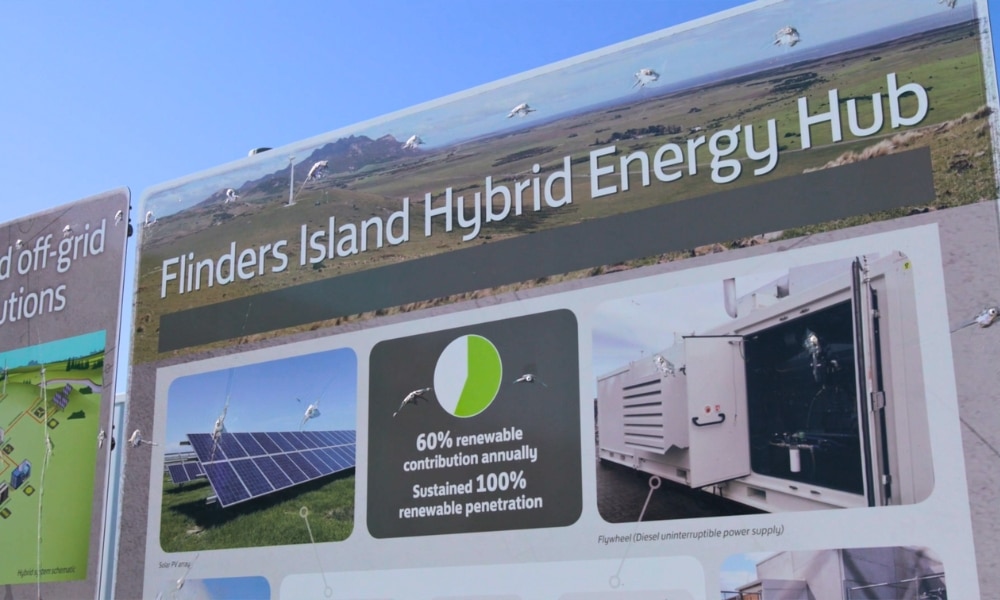
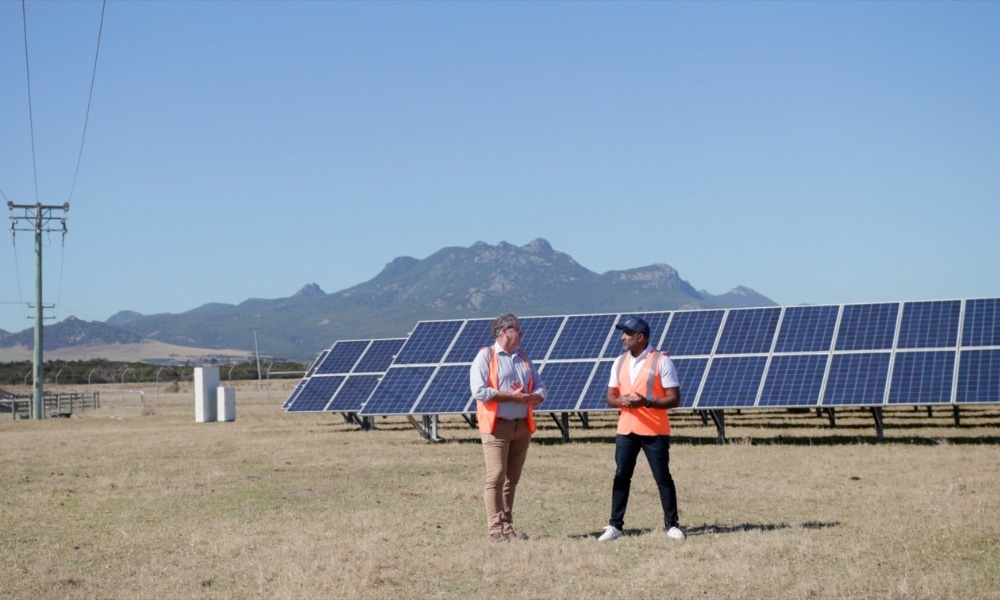
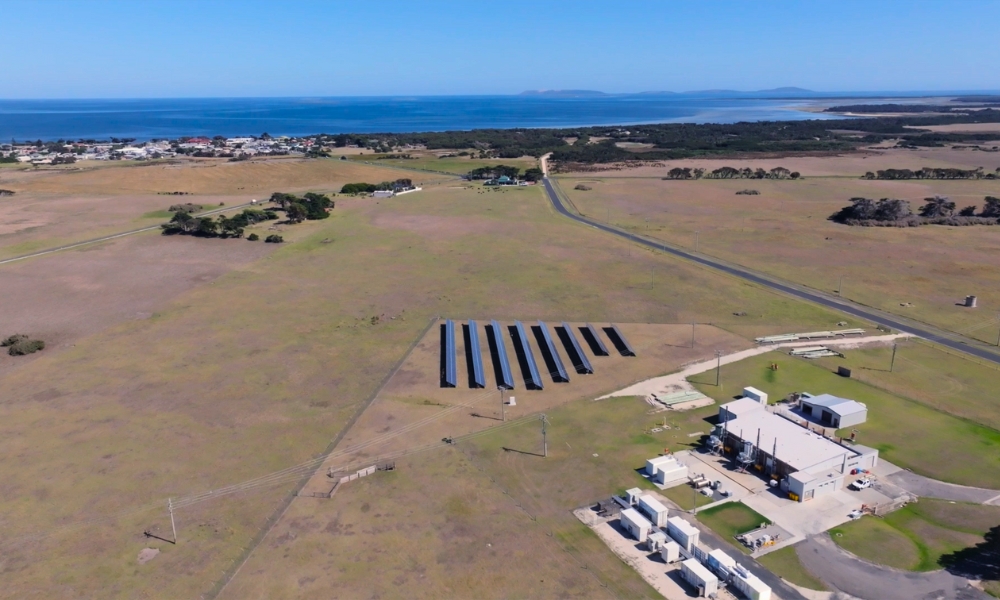
As Simon stated, the Hub represents one of Australia’s first examples of grid application of high-penetration renewables. With a robust infrastructure that provides 350km of distribution lines across the Island, Hydro Tasmania and the Hybrid Energy Hub demonstrate how renewables can play a major role in the energy network.
Development of the Hybrid Energy Hub follows the success of the King Island Renewable Energy Integration Project, which has seen King Island’s energy needs supplied solely from renewables when conditions allow, a world-leading breakthrough at the multi-megawatt scale. You can find out more about the ground-breaking work of Hydro Tasmania and Entura by following this link.
Momentum Energy and Flinders Island
Curious as to how someone might use the energy generated, Roshan queried how a new home on Flinders Island would benefit from the Hybrid Energy Hub. Momentum Energy is Hydro Tasmania’s retail arm and the energy retailer for Flinders Island. Residents receive regular bills and also enjoy a one-for-one feed-in tariff if they have solar (for systems with capacity under 7.45kW), further demonstrating the value of renewable energy on the Island.
You can check out the current renewables production for Flinders Island on the Hydro Tasmania real-time energy dashboard.
Missed the episode? No worries! Catch up now via 9Now. You can also catch encore screenings at Sunday at 8am, Tuesday at 6:30am, and Thursday at 10:30am.






